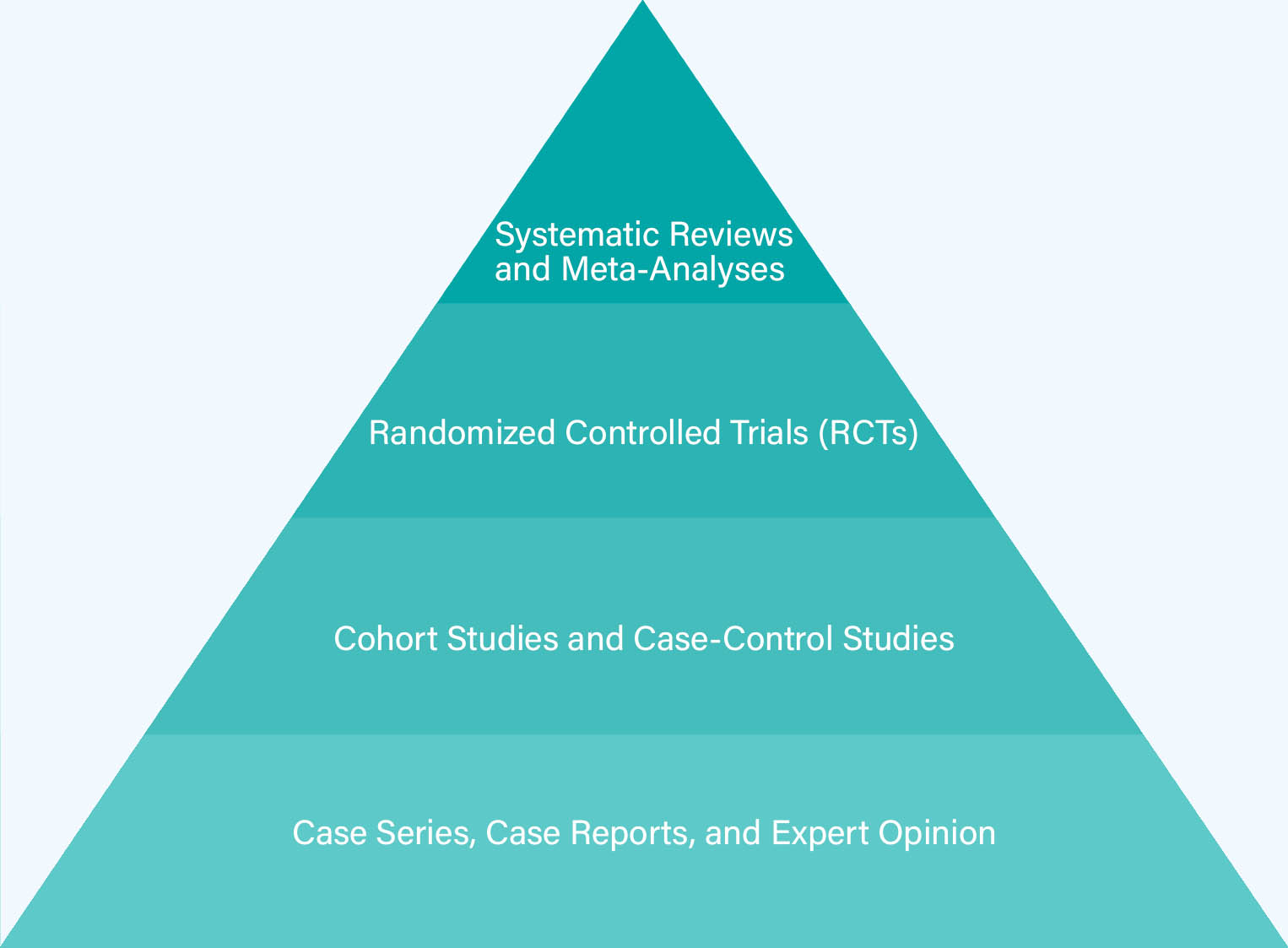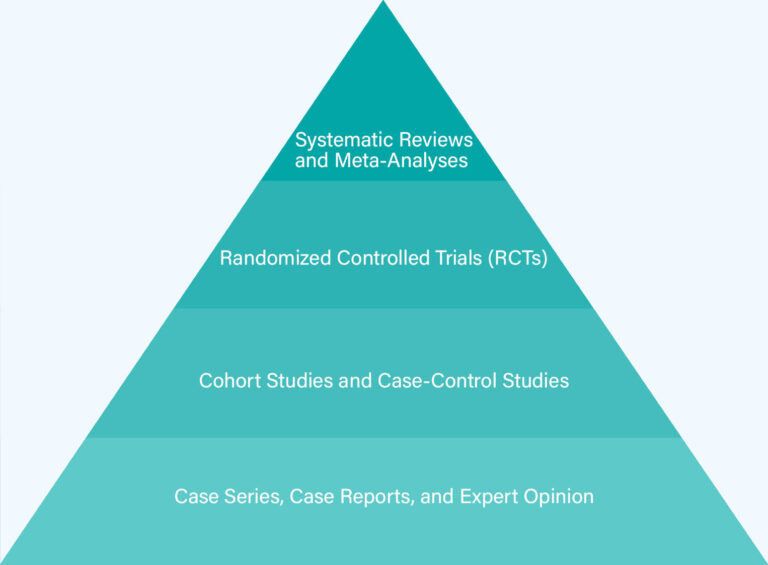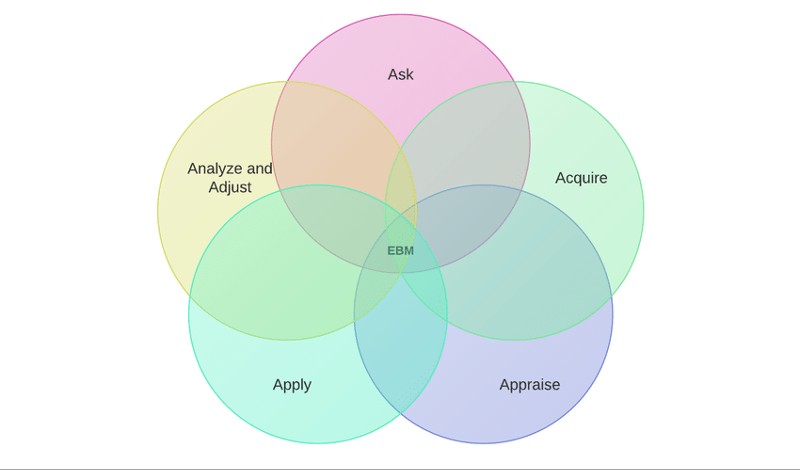
In the vast ocean of medical literature, where waves of research and studies crash against the shores of clinical practice, navigating toward the truth can seem daunting.
Enter evidence-based medicine (EBM)—a guiding compass that helps clinicians conquer the overwhelming tides of information. EBM is not just a buzzword. It’s the lifeline that ensures we don’t drown in the sea of conflicting data, but instead, make informed, accurate decisions that improve patient outcomes.
At the heart of EBM lies the evidence based medicine hierarchy, a structured approach to determining which research findings should steer our clinical choices – what are the highest forms of evidence?
In the quest to conquer the ocean of information, the hierarchy of evidence is your map. This evidence based medicine hierarchy ranks evidence based on the methodological quality and rigor of research. It acts as a beacon that guides clinicians toward the most reliable data. The higher you climb on this hierarchy, the closer you get to the pinnacle of truth in medicine.
Picture the hierarchy of evidence as a pyramid, with its apex representing the most robust and trustworthy forms of evidence. At the base, you’ll find evidence that’s more abundant but less reliable. The higher you go, the stronger and more dependable the evidence becomes, yet it’s also scarcer. [insert diagram of the pyramid of evidence with SR/Meta analysis on top]

Understanding the different levels within this hierarchy is crucial for navigating the ocean of medical literature. The levels of evidence in EBM aren’t arbitrary—they’re carefully categorized by the Oxford Centre for Evidence-Based Medicine (CEBM), which ranks evidence from Level 1 (highest) to Level 5 (lowest). This ranking isn’t just a label; it’s a tool for clinicians to weigh the quality and reliability of the evidence.
Let’s break down the levels, giving you the weapons you need to slice through the murky waters of research:
When it comes to ruling the seas of medical knowledge, nothing beats systematic reviews and meta-analyses. They are the commanders that pull together findings from multiple studies, analyzing the data to give you a clear, focused direction. If you want to make decisions with confidence, this is where you anchor your ship.
Right below systematic reviews and meta-analyses are randomized controlled trials (RCTs). These are the battleships of the EBM fleet—designed to minimize bias and maximize reliability. By randomly assigning participants to either the treatment or control group, RCTs ensure that the outcomes are the result of the intervention itself, not other confounding factors.
Randomization is like the ship’s compass, ensuring that we stay on course by eliminating bias. Control groups, on the other hand, serve as the calm waters against which the effects of the treatment can be measured. Together, these components make RCTs one of the most reliable tools in the clinician’s arsenal.
Next in line are cohort studies and case-control studies. These are your scouts, observing from the sidelines and providing valuable intel. Though not as conclusive as RCTs, they offer important insights, especially when RCTs are not feasible.
Case series and case reports provide valuable yet anecdotal information about individual or small groups of patients. They often highlight rare conditions or unique responses to treatment.
While case reports focus on individual patient cases, case series combine multiple reports to provide a broader perspective. In comparison, case-control studies analyze groups to identify potential risk factors. Each of these study types contributes to medical knowledge, but they do so with different scales and methodologies.
In the progression of research, a case report can lead to a case series, which, in turn, may generate hypotheses for case-control studies. It’s important to note that without a control group, findings are more prone to bias and should be interpreted with caution.
At the base of the pyramid lies expert opinion. While it carries the weight of experience, it lacks the solid foundation of systematic research. Expert opinion can guide you, but it should never be your sole navigational tool in the turbulent waters of clinical decision-making.
So how do you navigate these waters effectively? The 5 A’s of EBM model is your ship’s course, guiding you from the initial clinical question to the final assessment of your decisions:

Critical appraisal is the captain of your ship, steering you toward evidence that is not just available, but relevant and reliable. It’s the process of dissecting research, understanding its strengths and weaknesses, and deciding whether it’s fit to guide your clinical decisions.
At the core of EBM are three pillars—the triad of evidence-based practice (EBP). These pillars are the foundation upon which every clinical decision should stand:
To conquer the ocean of literature, you must integrate these three pillars. Best research evidence ensures that you’re using the most reliable data, clinical expertise allows you to apply this data effectively, and patient values ensure that the course you set aligns with the patient’s desires and circumstances.
In the vast, sometimes treacherous ocean of medical literature, the evidence based medicine hierarchy is your map, the five-step model is your course, and the three pillars of EBP are your sails. Together, they help you navigate toward better patient outcomes, ensuring that every decision you make is grounded in the best available evidence, guided by your expertise, and aligned with what’s best for the patient.
Understanding and mastering this hierarchy isn’t just a skill—it’s a necessity for anyone serious about practicing medicine at the highest level. do you want to know more about how to search for evidence in medical databases? Consider joining our course “Complete Guide to Database Searching for Systematic Reviews“.